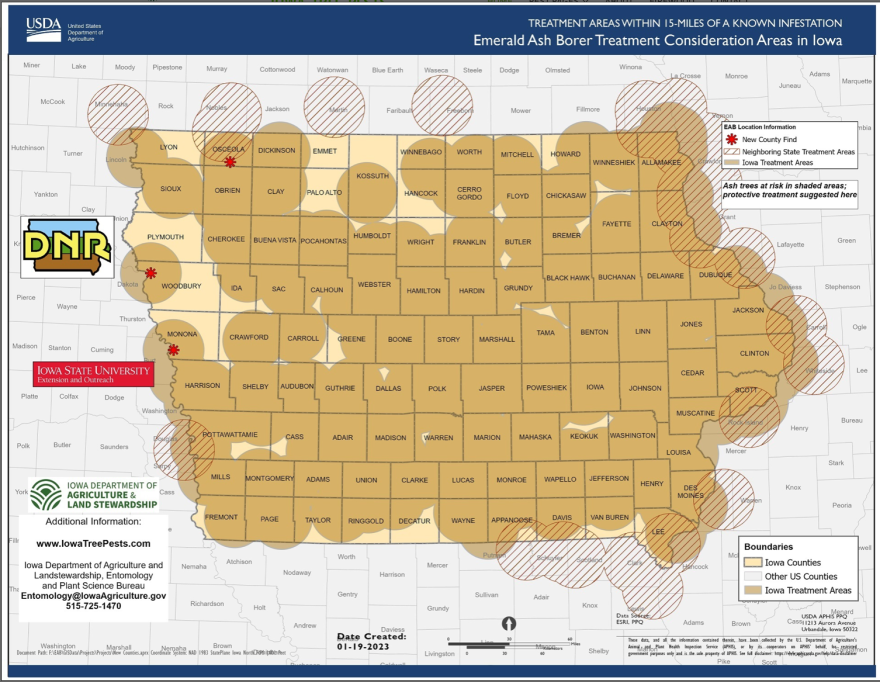Thursday, the emerald ash borer's presence has been confirmed in Sioux City in samples collected from trees by the Iowa department of agriculture and land stewardship. The insect has also been detected in Monona and Osceola counties for the first time.

The invasive, ash tree-killing insect from Asia has now been confirmed in all but three of Iowa’s 99 counties.
At a Friday morning news conference downtown, Sioux City parks superintendent Kelly Bach talked about the damage emerald ash borers or EABs can do to ash trees.
“EAB is a significant threat to the native ash tree species, typically killing a tree in 2-to-4 years after becoming infected. The cumulative damage by the larvae feeding on the inner bark eventually kills the tree, disrupting the transport of water and nutrients up to the tree.”
An estimated 28% of trees in Sioux City's parks and along streets are ash, and the city has been preparing for the ash borer's inevitable arrival.
Bach outlined the city’s plans to remove trees affected by the emerald ash borer.
“The removal of 16-to-24 inch ash trees in the mid-town to Near Northside neighborhoods, and we’ve partnered with the arbor day foundation to do a free tree giveaway.”
The city’s plan includes allowing ash trees in unmaintained areas to be left as host trees to slow the spread of the ash borer, injecting a larvae-killing chemical into the trees. For residents who have EAB infected ash trees, Bach says the best time to treat the trees with chemicals is in the spring, but ask questions before you buy.
“What chemical are you going to use? What are the effects of those chemicals? As anything, there will be an influx of people wanting to treat your trees, remove your trees. So, do your due diligence, just like anything else when there’s a hail storm and you need a roof, you know, get several quotes.”
Also, Bach says residents should know that the treatment of the infested ash trees will have to continue over the lifespan of the tree.
Bach says the densest ash tree populations are likely to be in the older parts of the city, because many trees with Dutch elm disease in the 1970s were replaced with fast-growing ash trees.
Woodbury county extension and outreach has scheduled a public meeting for homeowners and other concerned residents to learn more about the ash borer and tree treatment and replacement options.
From 6:30 p.m.-8 p.m. On feb. 2 at the extension office on southern hills drive. Preregistration is requested. Go to extension.iastate.edu/woodbury for information.





